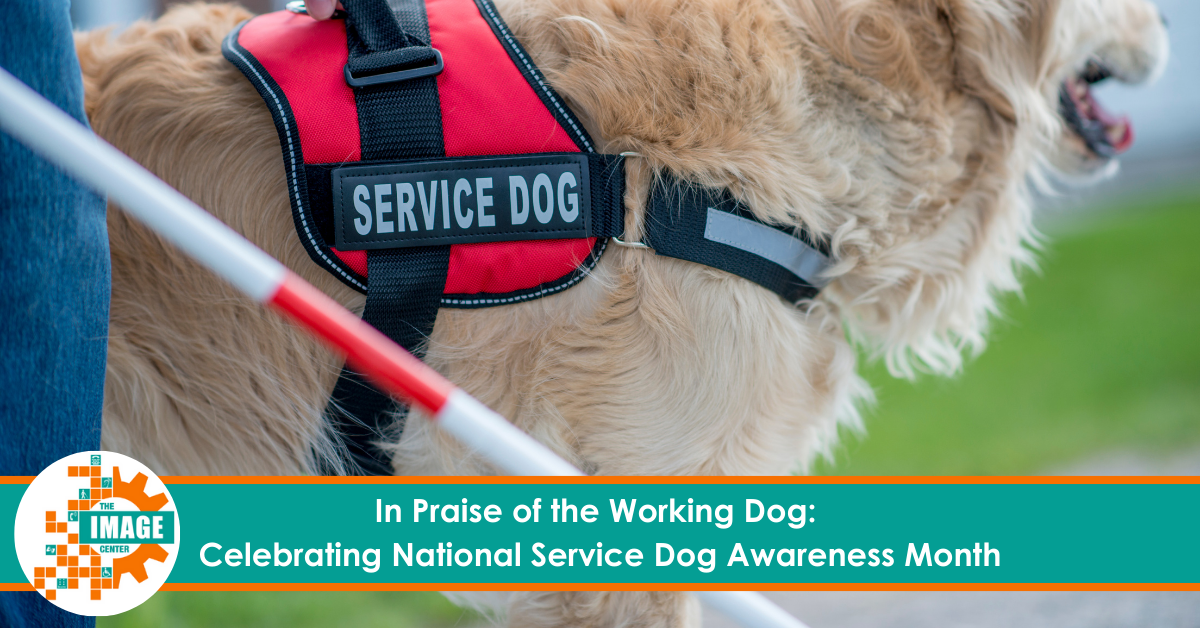Labor Day is a time to recognize to thank everyday people for the work they do. While we’re at it, we thought it fitting to take a moment to honor the hardworking dogs who play a crucial role in the lives of many people in our community.
What Is a Service Dog?
A service dog is a dog that is trained to perform a specific task for a person with a disability. Examples include a guide dog for a blind or low-vision person, a response dog for seizures and similar medical conditions, a mobility dog for those who have motor-related disabilities, a medical alert dog, and many more. Each service gog is often trained since puppyhood to perform their service, then carefully matched with his/her owner. Since service dogs are working dogs, it is essential for an owner to balance work with play, and when a dog slows down or becomes unwilling or unable to work, to “retire” the dog. In this way, the work of a dog is much like the work of a human.
A common myth is that emotional support animals (ESA’s) are service animals. Though they play an important role in the lives of many people who own and use them, they are not recognized by law or by the service animal community as service animals.
Service Dogs Aren’t for Everyone
As a blind person, Chris Nusbaum, a member of our IMAGE Center staff and the author of this article, has spent much of his life talking with people who have encouraged him to get a guide dog. Though he knows many people who have guide dogs and love them, he doesn’t have one himself. Why? Simply because, at this time, a guide dog just isn’t right for him. The owner of a service dog has to be trained almost as much as the dog, first on their own so they know how to use a service dog and then together so human and service dog can make a good team. Chris may consider a guide dog in the future, especially if he can use one as both a guide and a response dog for seizures.
We use Chris as an example because we want to make clear that there’s no such thing as a one-size-fits-all solution. Whether or not someone uses a service dog is a personal preference. For those who choose to do so, it takes a lot of hard work, both for the person and the dog.
Letting the Dog In: It’s the Law!
Unfortunately, service animals and their owners have faced discrimination for decades, and in some cases they continue to face it. This discrimination has mostly come in the form of businesses, transportation, and other public places refusing to admit people with their service animals. Though this had improved a great deal since the passage of the Americans with Disabilities Act (ADA), it’s now becoming rampant again in ride-sharing services like Uber and Lyft. We want to make clear that, despite the fact that Uber and Lyft cars are owned by individuals, they are still forms of public transportation, so refusal of this kind is illegal. If you are a service animal user and face this issue, whether with ride sharing or in any other business, we urge you to report it to local disability advocacy organizations. If you need help with this, please contact the IMAGE Center.
In conclusion, the bond between service dog and handler is uniquely close because it’s grounded in both hard work and constant companionship. So, as we celebrate service dogs this month, here’s to both members of each team for the work you put into making your team work.

